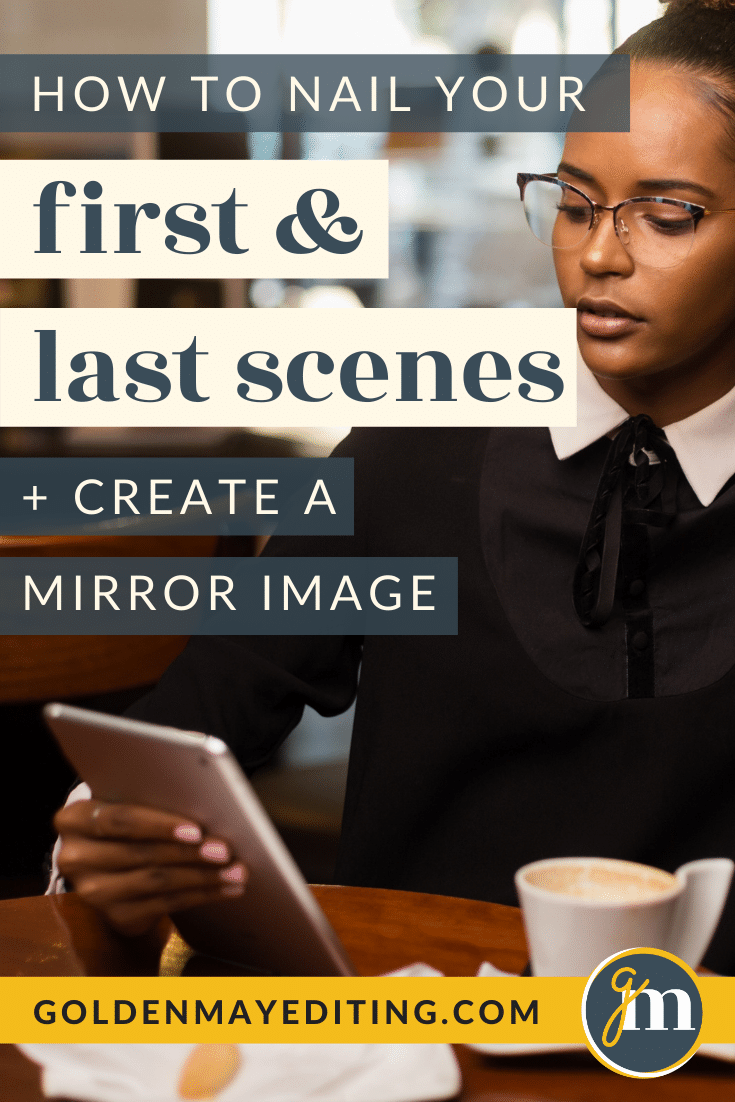“A story cannot be told about a protagonist who doesn’t want anything, who cannot make decisions, whose actions effect no change at any level.” —Robert McKee, Story
So many writers obsess over the very first line of their story. If I can just get this right, they think, I’ll grab my readers attention and they’ll be hooked!
While this isn’t wrong by any means, many writers spend way too much time focusing on that first sentence and not enough on considering the role of the whole beginning scene. What results is a punchy few paragraphs, but an overall weak introduction to your story.
The first scene of your story should let readers know what kind of journey they’re about to embark on while at the same time introducing your main character and their flaws. In contrast, your last scene should show just how much your main character has changed, that they have overcome their flaws and therefore learned your story point (or failed to do so).
To create the most impact, it is important to design these two scenes with each other in mind. They should form “mirror images” that highlight the main character’s internal arc of change and show your reader just how much they’ve transformed.
Using Jessica Brody’s Save the Cat! Writes a Novel as a framework, let’s explore how to use both your first and last scenes to create the perfect bookends to your story!
A First Scene That Hooks
In the Save the Cat! plotting method, the very first scene of your story is called the Opening Image. The goal of the Opening Image scene is to depict your main character’s “status quo” —their life before things start to go wrong and your plot problem is introduced.
A successful first scene establishes your character’s Internal Obstacle and goals, and how they conflict—visually. As you set the stage for your story, show your reader who your main character is when the story starts, what your main character is actively fighting for, and why. We don’t just want your main character to tell us what they want, we want them to show us by pursuing it on the page. We need to begin to see how their internal obstacle belief is influencing their life and, unbeknownst to them, actually inhibiting them from achieving their goal.
Build your Opening Image scene around your main character as they take some action to pursue their goals, and show them make a decision which demonstrates how their internal obstacle flaw is affecting their life. Showing the reader these things will instantly form a connection between them and your main character, which will hook their attention and keep them reading forward!
EXAMPLE: In An Ember in the Ashes, Laia of Serra’s brother Darin comes home late and Laia lays awake, summoning the courage to confront him about her suspicions that he’s working for their oppressors, the Martials (her goal). From Laia’s fear of confronting her brother, we learn immediately that she views herself as inherently weak (her internal obstacle belief), and her brother as inherently strong. We see how this is affecting her relationship with him, making it hard for her to confront him. Before she can summon the bravery to demand answers, however, their home is raided and her grandparents tell her to run away with Darin, leaving them behind. Believing herself too weak to take action to support her grandparents, she obeys and leaves out the back with Darin (her choice).
As you create your Opening Image scene, ask yourself these questions:
- What does your main character want, and what are they actively doing in pursuit of this goal?
- Is why your main character wants this goal clear on the page? Are you letting the reader inside your character’s head?
- Is your main character’s internal obstacle belief, their character flaw, clearly displayed on the page during this scene? Are they viewing the world through this misguided lens?
- Are you showing the reader how, and why, the main character’s internal obstacle belief influences their life?
- What decision will the main character make that upholds or demonstrates their internal obstacle belief?
The Last Scene Bookend
In the Save the Cat! plotting method, the last scene of your story is called the Final Image. It is the after snapshot, the opportunity to show just how much your main character has changed for the better over the course of their arc. It acts as a visual representation of your story point.
Since your story’s climax moment is where the main character proves they have changed, the Final Image is where they show they’re living their new life with their new worldview. This is where you show how far they’ve come and what they’ve learned by showing the consequences of their change in the external world.
As you work to design both your first and last scenes, remember that they should ‘mirror’ each other in some way—with a similar plot point, setting, etc—yet at the same time demonstrate a stark change in your character internally. Create a similarity between the two scenes in order to show readers, visually and through action, what the character’s new life looks like and how much they’ve changed (or failed to change) throughout the story.
EXAMPLE: In the Final Image of Laia’s story in An Ember in the Ashes, Laia’s planned rescue distraction goes perfectly. In the chaos, she jumps out from her hiding spot to save her friend Elias from execution (goal). Unlike in the Opening Image, Laia doesn’t hesitate to trust herself nor does she run from the Martials. The visual of her bravely jumping out to save Elias (internal change), and her success in rescuing him (external consequences), proves the story point that “Your power lies in your hands, and your hands only” (demonstrating her change). While leaving, Laia whispers a prayer to her brother Darin to hold on, and that she plans to save him from prison next—on her own (which is in stark contrast to her behavior in the Opening Image).
As you create your Final Image scene, ask yourself these questions:
- Does your final image show how your main character has transformed? Are you showing the reader the protagonist’s change through external consequences?
- Is it clear the main character is now living their life with their new understanding of the story point?
- Is there similarity between the action or setting of the Opening Image and the Final Image?
- Is there a clear contrast in your main character’s behavior between the Opening Image and the Final Image, which proves that they have undergone a change?
In Conclusion
Your Opening Image and Final Image scenes are pivotal to grabbing the attention of your reader and keeping it. The best way to ensure that your protagonist’s arc is clear is to spend your time and energy on nailing each of the scenes and ensuring they mirror one another, which proves that your main character has changed.








Leave A Comment